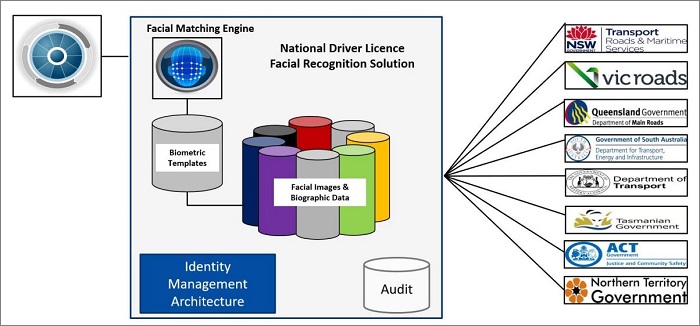The Department of Home Affairs has begun work on its national facial recognition database, putting a large project for consolidating national ID matching to tender last week.
Home Affairs is looking for a company that will “build and deploy” this system which will include migrating a pre-existing centralised database of facial images collected from state driver licenses, as first reported by InnovationAus.
Legislation for governing the identity matching system and associated facial recognition database was proposed in mid-2019.
But it hit a snag when a parliamentary committee review found the laws should be redrafted in order to make Home Affairs’ new capability “built around privacy [and] transparency” and “subject to parliamentary oversight” including basic annual reporting on the use of the identity-matching services.
Yet Home Affairs has gone ahead with the project, quietly initialising the procurement process for a company to “host and manage” its identity matching services system on the Austender website.
It is privately briefing industry about the tender requirements today.
Last week’s tender has drawn strong criticism from civil and digital rights activists who are concerned the government is plowing ahead with a system that does not have appropriate oversight and flies in the face of democratic transparency.
A representation of the facial recognition system's architecture. Image: Home Affairs/AusTender
The Queensland Council for Civil Liberties (QCCL) wrote to the Home Affairs Minister Karen Andrews – whose electorate is on the Gold Coast – asking if the department is redrafting the bill, if there will be public consultation for a new bill, and whether the government has considered international movements against the use of facial recognition technology.
Angus Murray, vice-president of the QCCL, told Information Age it was a “strange thing for the government to be doing, and a strange time to be doing it”.
“We’re actually seeing the government take a step away from what democracy means in Australia in order to advance law enforcement technology and law enforcement powers,” he said.
“This isn’t at the forefront of what the government is doing as it goes into election season.
“It has been done without announcement from the Home Affairs Minister or the Prime Minister, aside from publishing a form on an obscure government website.”
Murray is especially troubled at the government’s decision to continue with its facial recognition system despite ongoing reviews into Australia’s Privacy Act and major reform of electronic surveillance legislation.
“Why would we be going forward with a facial recognition system in that context?” Murray asked.
“It looks like they are spending money for the sake of spending money, on something that will be changed anyway.
“And it draws into question whether this government should continue what it is doing with these law enforcement powers.”











